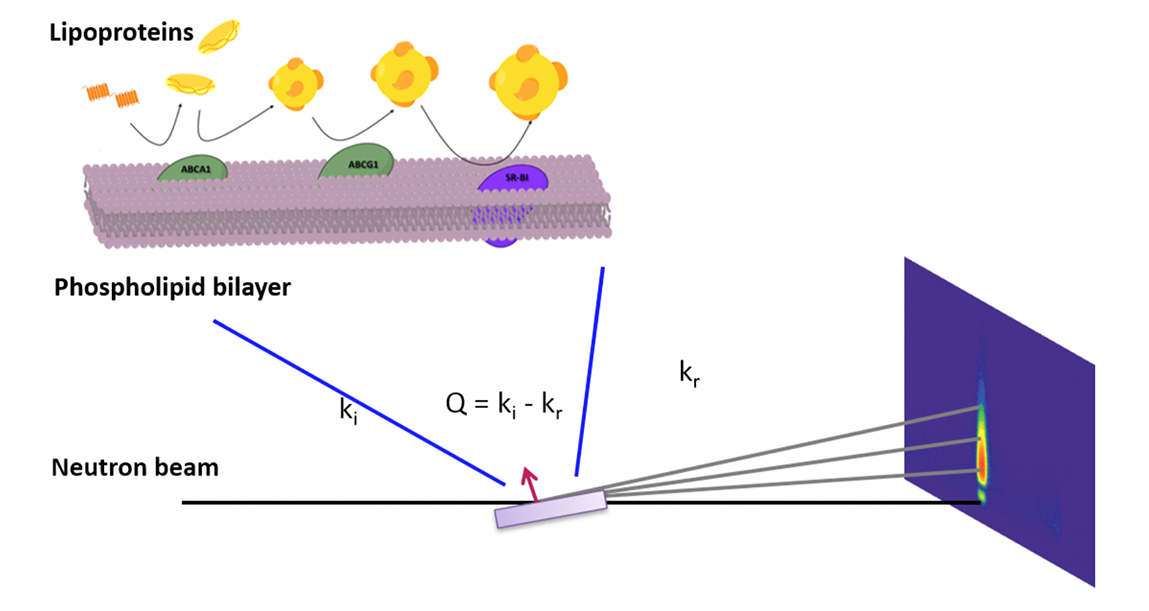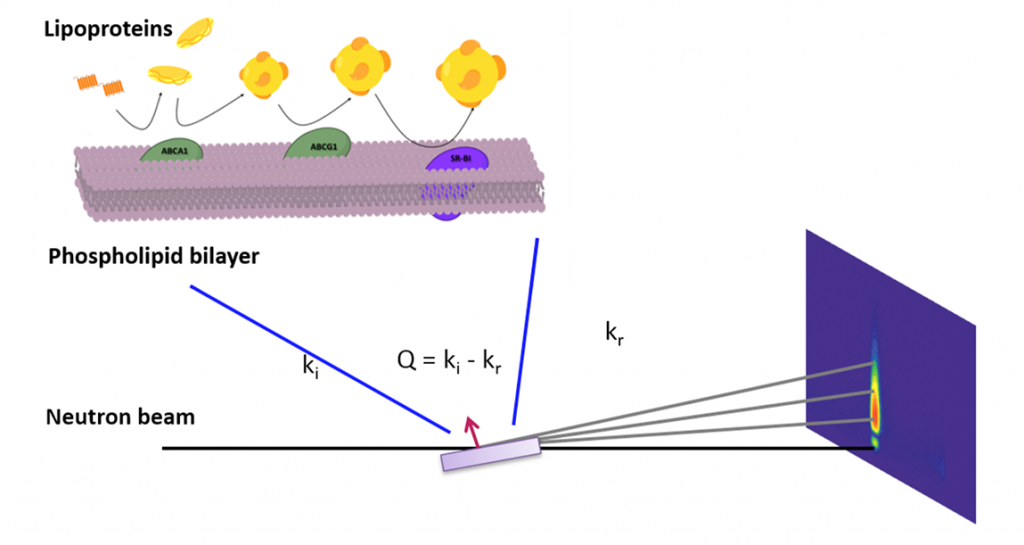Why?
Why is it so that individuals with good cholesterol values develop cardiovascular disease, whilst other individuals with poor values remain healthy? Cholesterol and other fats are transported through the blood via specific transporters called lipoproteins. The most well-known are the so called “good” and “bad” cholesterol. Understanding these particles in structure and composition and the way they interact with artery wall is crucial in understanding this disease, the main killer of the West. Such knowledge would aid in improving diagnostic tools as well as in development of new drugs.

Figure 1. Experimental set-up.
Figure 2. Neutron contrast variation illustration.
How?
How do we determine not only the detailed structure but also and more importantly the capacity of these particles to exchange and deposit fats? By using biomimicry for the arterial wall surface we are beginning to understand the role of each individual components in this very complex intermolecular process. This is because we can highlight specific components of the system using selective deuteration and in this way provide unique information not possible to obtain with other techniques.
Who?
Originally a collaboration between Biomedical Sciences at Malmö University, the Clinical Research Center at Lund University and the Pharmacy Department at Uppsala University, this Nordic network has grown into a transatlantic international collaboration now including the Life Sciences Group at the Institut Laue-Langevin, Singapore Lipidomics Center, iNano Center at Aarhus University and the Biochemistry Department at Ruhr Universität in Bochum.
What's next?
Natural fats to more complex biomimicry – how complex can we go? Are particular components more atherogenic? Will the engineering of artificial lipoproteins enable us to pinpoint the role of each lipoprotein component? Can we begin looking at the interplay between the good and bad cholesterol? Most recent research suggests that this interplay is key to most accurately predict the risks for this disease and our work offers a way to directly give proof of this important hypothesis.
Contact: Marité Cardenas
marite.cardenas@mau.se
Biofilms Research Center for Biointerfaces
Malmö University (MAU)
This project is funded by the Swedish Research Council, the Craaford foundation and the Interreg funded ESS & MaxIV: Cross Border Science and Society Project. Experiments are performed at Institute Laue Langevin, the ISIS Neutron and Muon Source and Research Neutron Source Heinz Maier-Leibnitz (FRM II).

